Island Hopping
Sick of hearing about the same old European islands? Imogen Lepere has gone cross-continent to find those small in stature, but with massive dinner party cachet
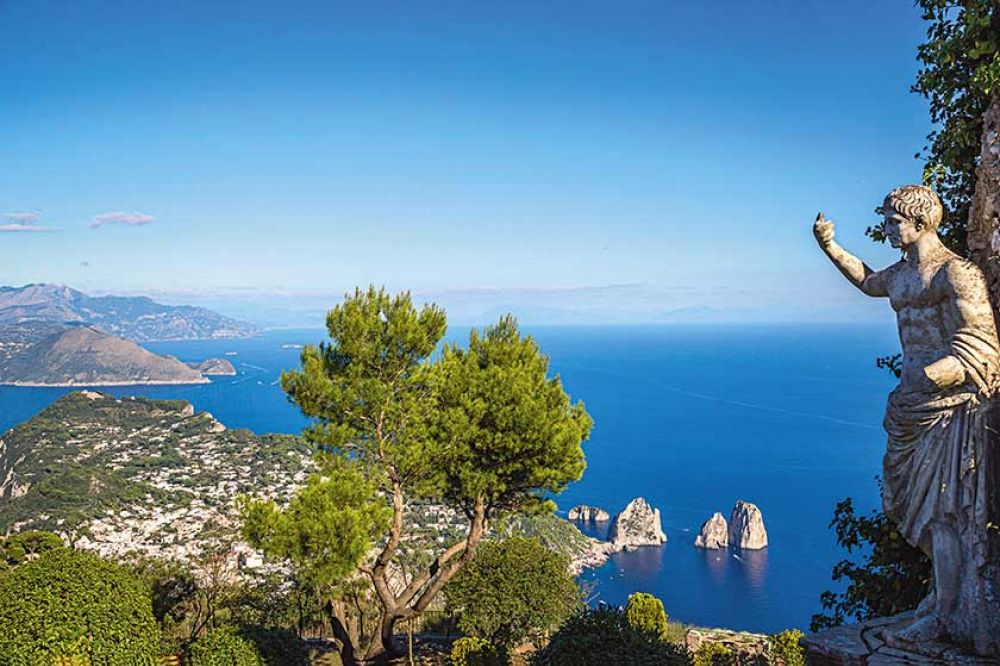
Sick of hearing about the same old European islands? Imogen Lepere has gone cross-continent to find those small in stature, but with massive dinner party cachet
There is something utterly thrilling about arriving on Capri at night. The craggy mass of the island looms almost as tall as it is wide, cutting an impressive silhouette against the star-studded sky. The velvety blackness of lemon groves is punctuated by the glittering lights of buildings in the distance. By day, the town is a creamcoloured maze of pedestrian lanes that occasionally open up into squares where couples sip Aperol spritzes and smoke cigarettes. Have a taxi do the hard work for you and make the climb up to Anacapri in a matter of minutes. The village above its famous big sister is where most locals live and it also has several intriguing sites. Swedish writer, politician and rumoured spy Axel Munthe’s house and garden has views over Mount Vesuvius, while the floor of the Church of San Michele, down a tiny alley, is entirely covered in mosaics depicting the Garden of Eden, with the tree of life at the centre and all manner of bizarre creatures gambolling around. For a long and refined lunch, catch a tuk-tuk from the main square to Beach Club Il Riccio 00 39 081 837 1380, capripalace.com which is set into the cliff overlooking the Blue Grotto. With its cabanas draped in white and sky-blue chairs, it wears its Michelin star breezily. Don’t miss the silky sea bass, a local speciality, and ‘the room of temptation’, an antechamber filled with exquisite sweets, many featuring tiny wild strawberries.

Where to stay
Stylish Capri Suites has two serviced rooms in an former convent in the centre of Anacapri. Doubles from £135 (00 335 528 0647).
How to get there
Fly to Naples with British Airways (britishairways.com) from £204 and catch the ferry, £22 return (caremar.it).
At a miniscule 12sq km, Kastellorizo proves the old adage about good things and small packages. This tiny fleck floats on the very edge of the Dodecanese archipelago and it’s so remote that sailors used to call it ‘Europe’s edge’. Its lonely location and lack of sandy beaches deter the bucket-and-spade brigade and the couple of tavernas on the waterfront are instead populated by romantics, those with a family connection and bourgeois bohemians (David Gilmour of Pink Floyd wrote the weird, ethereal melody Castellorizon after succumbing to the island’s spell). Apart from a single taxi, the 300 inhabitants have made few indents on Kastellorizo’s charm and Mother Nature has rewarded them well. The natural harbour is among the best in the world, the water off the east coast is some of the most crystalline in the Mediterranean and the 'blue cave' is one of the biggest sea caverns in Greece. Stalactites guard the entrance like teeth and rare Monachus seals are thought to live deep in its inner chamber. Make sure you stop off at the Isle of Ro; this tiny islet was once home to eccentric rebel Despina Achladioti, who raised the Greek flag every morning during the Nazi occupation as an act of resistance and continued the practice until her death in 1982. Kastellorizo village is mostly home to two-storey neoclassical mansions. Once a wealthy trading destination, it has an astonishingly cosmopolitan air, which you can soak up at Kestelorizo Kiffisia, 00 21 0 89 83 8405, (kastelorizo.com.gr) a smart seafood restaurant.
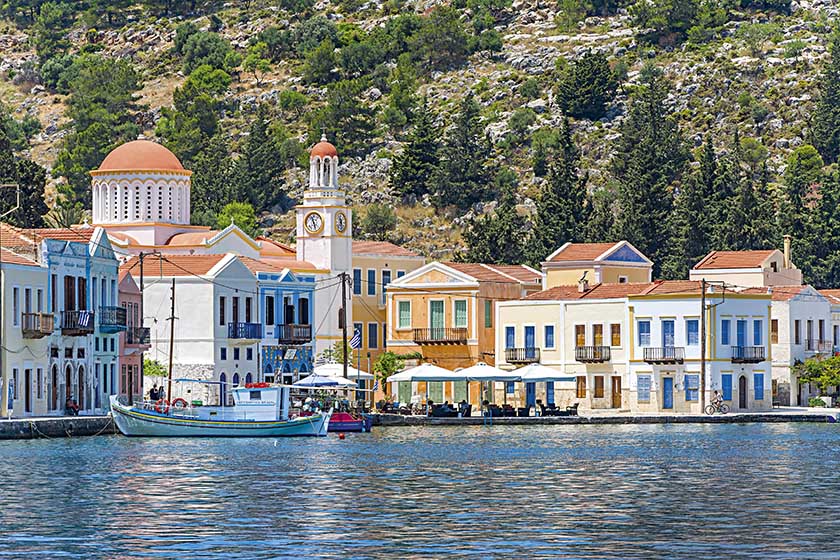
Where to stay
Red Castle Premium Studios are just 70m from the sea. Doubles from £39. 00 30 224 604 9109, kastellorizo.de.
How to get there
Fly to Rhodes with easyJet (easyjet.com) from £174 return. Olympic Air (olympicair.com) flies from Rhodes to Kastellorizo four times a week from £75 return.
Many are seduced by the convenient airport and photo opportunities of Santorini yet few realise that Amorgos is a mere discus throw away. Although there is only an hour’s journey between the two, just one boat a day goes to the Cyclades’ easternmost island, and it retains a dignified aloofness from the rest of this popular archipelago. As if wild mountains, 19 beaches and ancient footpaths through cypress groves aren’t enough, Amorgos also has several quirky features that will feed your imagination. A shipwreck lies across a turquoise inlet in the Bay of Liveros, an 11th-century monastery clings to the cliff above Agia Anna beach, while the deserted village of Asfondylitis has haunting stone cottages and intriguing frescoes. Chora, the capital, combines all the best bits of Cycladic towns: labyrinthine streets lined with whitewashed cottages, blue-domed churches and picturesque windmills that barely stir in July. Life potters along at a deliciously slow pace. Sit under the huge eucalyptus tree in Plateia Loza, the main square, and sip an iced coffee. You’ll see local men gathering at the kafenion (café) to sip ouzo and play backgammon, while local restaurateurs hang octopus out to dry. A little way down from the windmills, Leonidas taverna 00 30 228 507 1542 is as traditional as it gets, with lovely views down the hills towards the sea. Sit outside and enjoy a carafe of local wine as the sun slips below the horizon then get stuck into kontosouvli, chunks of meat spit-roasted over olive wood.
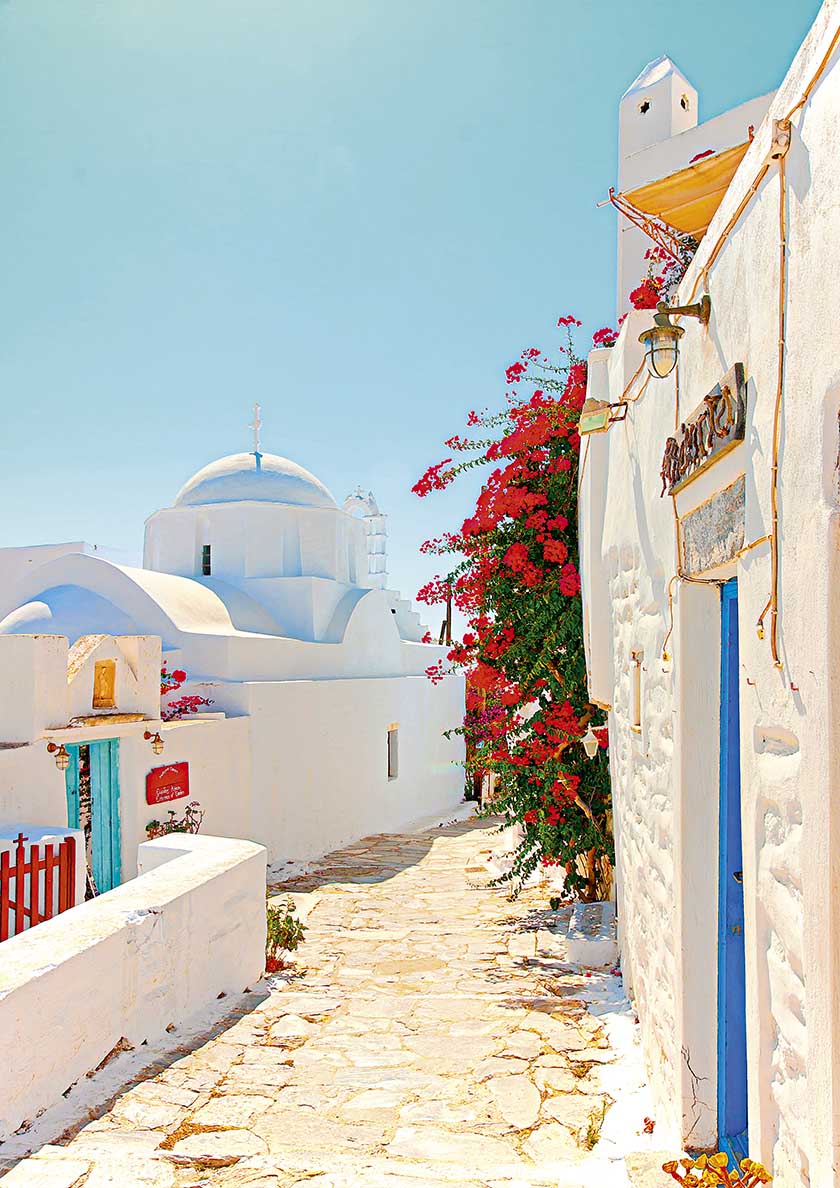
Where to stay
Emprostiada Traditional Guest House is a small hotel with a lovely garden on the edge of Chora. Choose from double rooms, apartments and maisonettes. Doubles from £78.00 30 228 507 1814, emprostiada.gr.
How to get there
Fly to Santorini with easyJet (easyjet.com) from £243 return. The ferry to Amorgos costs £39 (seajets.gr).
Once used by Mussolini as a prison for troublesome opponents, exile must have tasted sweet on Lipari. In the early 20th century, this rugged volcanic tuft off the north coast of Sicily was made up of dense scrubland where orchids, heather and broom feasted on the acid-rich soil, lonely headlands plummeted into the Tyrrhenian Sea and idyllic beaches were flanked by dank obsidian caves. Catch a boat from the pastel-painted harbour in the main town (also called Lipari) and you’ll see very little has changed since then. Spiaggia Bianca beach is still milkwhite thanks to the fine powder of pumice stone in the sand, lava rock formations that look like elephants make for excellent snorkelling and sun-wisened locals enjoy malvasia (sweet wine) and traditional sesame biscuits as the late afternoon sun turns Marina Corta harbour gold. Lipari town is just big enough to retain a local feel, even at the height of summer. Its streets are dotted with colourful pots of geraniums and latticed balconies; during the afternoon siesta they’re empty but in the evenings, Corso Vittorio Emanuele comes to life. Order a bottle of Aeolian wine at Eden Bar 00 39 090 981 1611 and soak up the atmosphere. Feeling hungry? Wander up Via Roma to Sfiziusa, 00 39 090 981 1216. This inexpensive trattoria serves traditional Aeolian dishes such as smoked ricotta with capers and stuffed anchovies.
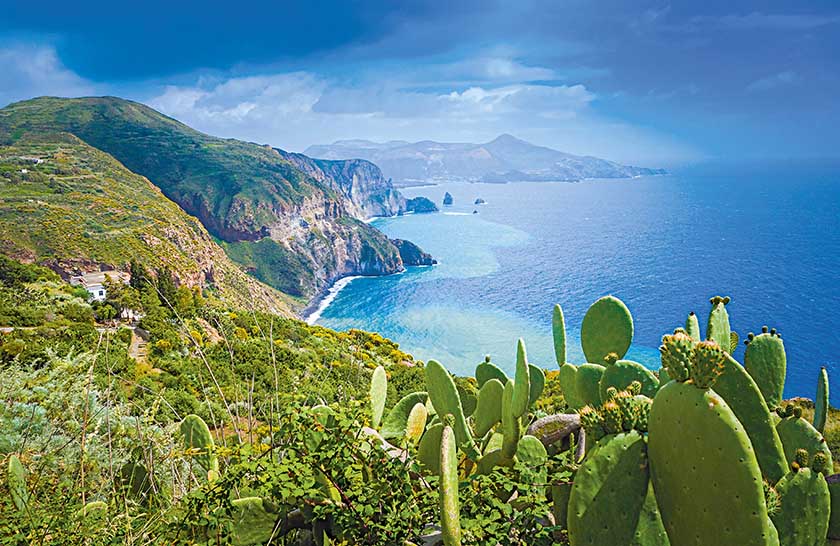
Where to stay
The Carasco has an appealing air of faded glamour, a saltwater pool and is situated on a rocky outcrop with views over the coastline. Doubles from £230 (00 39 090 981 1605, carasco.org).
How to get there
Fly to Sicily with easyJet easyjet.com from £132 return, then catch the ferry from Milazzo, from £25 return. infoeolie.com
When most people arrive in Split they stay there, seduced by the convenience of direct flights from London and the Mediterranean feel of the honey-hued old town. However, if you make the effort to catch the ferry a mere 50 minutes to Brac, you’re in for a surprise. The leaders of mighty empires have squabbled over this central Dalmatian island for millennia and it’s not hard to see why. The Illyrians were fascinated by Zlatni Rat, a beach on the island’s south that stretches 634m into the ocean like a horn. This unusual shape slices the wind and waves in two, resulting in powdery sand and forget-me-not blue water that is among the most beautiful in the Adriatic. Romans lusted after milky Brac stone (used in the White House), which is still sliced from the hillside in cubes like feta. Visit the stonemason school in the Unesco-listed town of Pucisca to learn sculpting techniques that have been passed down for 2,000 years. The Venetians capitalised on year-round sunshine by introducing wine-making to the island. Although phylloxera ravaged the vines in the early 19th century, in the past 20 years three fledgling wineries have sprung up. New and still fairly undiscovered, Stina is well worth a visit. Marvel at its vertiginous vineyards before heading to the tasting terrace to sample the rosés in delicate shades of pink. Although sun-worshippers descend on Brac’s southern coast from neighbouring Hvar, the majority of them only come for the day, choosing to spend their evenings in the pristine surroundings of the many glamorous hotels on this glitzier island. When dusk falls and the pleasure boats are gone, Bol’s harbour is filled with wooden riffs as fishermen haul in fresh sardines to be grilled and drizzled with home-grown olive oil at one of the many restaurants in the old town. Brac’s stillness becomes very pronounced after dark, when the sound of cars will be muffled by pine forests and large cedars choked with bougainvillea. Follow the serpentine road towards Supetar and soak up the tranquillity from one of the rustic tables at Ranjak 00 385 091 631 66 99. Dishes such as fried courgette flowers served with sheep’s cheese are a true taste of local culture, while olive trees filled with flickering lanterns scent the air.
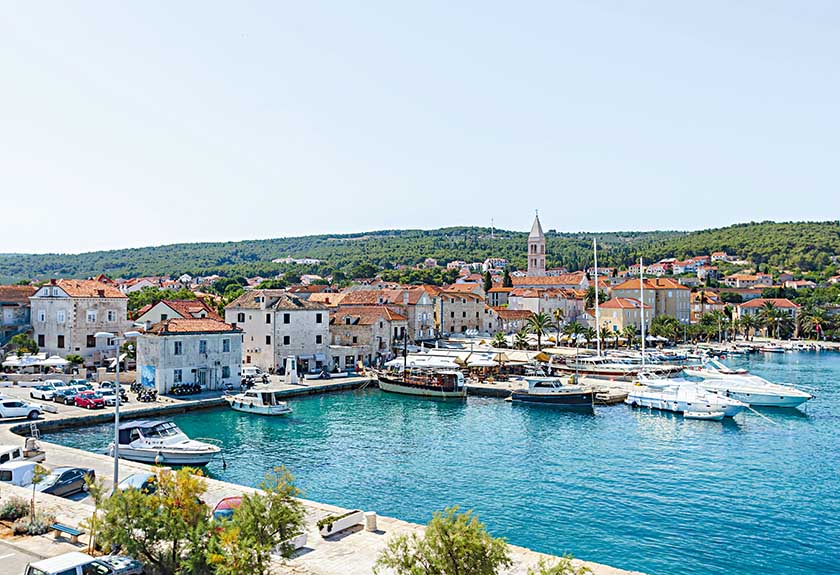
Where to stay
Villa Tiha is a dazzling property with a Jacuzzi, infinity pool running parallel to the sea, its own mooring and a huge terrace shaded by pine trees. From £900 per night (sleeps eight). 00 385 91 151 3199, hiddencroatia.com
How to get there
Fly to Split with Wizz Air (wizzair.com) from £197 return and catch the ferry, £6 one way (jadrolinija.hr)
History has been kind to the small but perfectly formed Croatian island of Vis. Very kind. It’s not just its architecture, including a Franciscan monastery on its own peninsula and Vis town’s sun-kissed tangle of alleys, balconies and staircases built by Venetian invaders, but in the island’s glorious isolation. A Yugoslavian naval base on the western edge of the country’s central archipelago, Vis was off limits to visitors from the end of the Second World War until 1989. According to the World Wildlife Fund, the seclusion has left a biodiversity hotspot that’s one of the Mediterranean’s last patches of paradise – a dramatic contrast to the over-exploited Italian coast across the Adriatic. Want proof? Take a dip in the emerald water caressing one of Vis’s coves, perhaps Stiniva, Zaglav or Molo Trovna, and you could well be swimming above dark torpedoes of plump tuna. Things have remained pristine on shore as well, with orchards of 1,000-year-old carob trees, rare orchids and more than 300 herbs and plants that are dying out elsewhere in the Med. Hire a moped and putter along the island’s two roads, littered with hairpin bends that thread across mountainous terrain topped by the paragliding hotspot of Mount Hum. You’ll ride through air rich with the scent of pine, oleander and lavender, enjoying heart-stopping views across to neighbouring Bisevo. After breaking for raw but palatable plonk from one of many family vineyards around Plisko Polje, drop down to the west coast yachting hub of Komiza, where Jastozera restaurant, 00 385 99 670 7755 lets you row through its entrance and moor up in the dining room. Its fresh fish and lobster (picked live from the ocean tank) are pricey by local standards but worth splashing out on. Serenity and a lightly touched landscape aren’t the only legacy of the island’s history. Its frontline military role during the Cold War has left a unique tourist attraction at Stupisce point near Komiza: a deep subterranean labyrinth of missile silos, its entrance originally hidden by styrofoam rocks. Equally intriguing is the almost flat expanse of Croatia’s only cricket pitch – a reminder of a British base during the Napoleonic wars. Unmanicured with potentially fatal bounce, perhaps but still conclusive proof that Vis really is no ordinary Mediterranean Island.
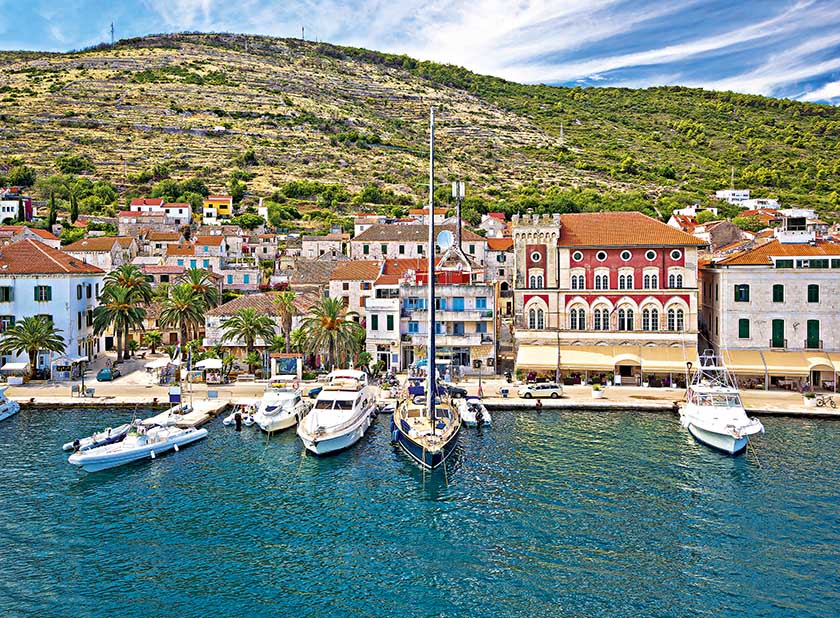
Where to stay
A one-bedroom 18th century apartment in Komiza sleeping up to four people costs £120 per night in high season. 020 8888 6655, croatianvillas.com.
How to get there
Fly to Split from £143 with Croatian Airlines (croatiaairlines.com) and catch the ferry, from £6 (croatiaferries.com)
Take a walk through the Jurassic crags of Madeira and you’ll be reminded of a rainforest, so lush is the glossy vegetation that feeds off sea fogs as thick as clouds. Not so on little Porto Santo. Although it lies just 43km north-east of its motherland, this wonderfully laid-back island is almost barren due to a permanent state of drought. Its six miniature volcanic peaks are as naked as the spines on a lizard and the camel-coloured hills resemble the Scottish highlands, with traditional houses whose roofs are made of earth. It’s a nightmare for local farmers but a gift for in-the-know travellers. The Atlantic sea breeze whisks over Porto Santo beach, one of the most magnificent (and least-crowded) in Europe. Stretching 9km from Vila Baleira to Ponta da Calheta, its water goes from smart navy to turquoise to cyan and is the ideal temperature for swimming, thanks to the warmth of the Gulf Stream. The sand is the colour of oatmeal and islanders believe it has healing properties – from time to time you’ll see older locals buried up to their neck looking for relief from rheumatism and skin problems. Compared to most European beaches, it is wonderfully simple, apart from the occasional low-key restaurant. Try Mar E Sol 00 351 291 982 269, which is family run and serves homely caldeirada a fragateiro (seafood stew) as well as sizzling limpets with garlic. As the heat of the day dies down and balmy evening envelops the island, while away an hour or two in Vila Baleira’s main square where wind-aged men sip sweet local wine and play cards beneath the palm trees while bare-footed children kick a football about, inspired perhaps by Cristiano Ronaldo, Madeira’s most famous export. The island’s other most high-profile visitor was Christopher Columbus, who lived there for a while after marrying the daughter of the local governor. You can visit his house, which is now a museum, although the 17th-century church of Nossa Senhora da Piedade next door is far more atmospheric, with a wooden ceiling and colourful azulejo (ceramic tile) panels.
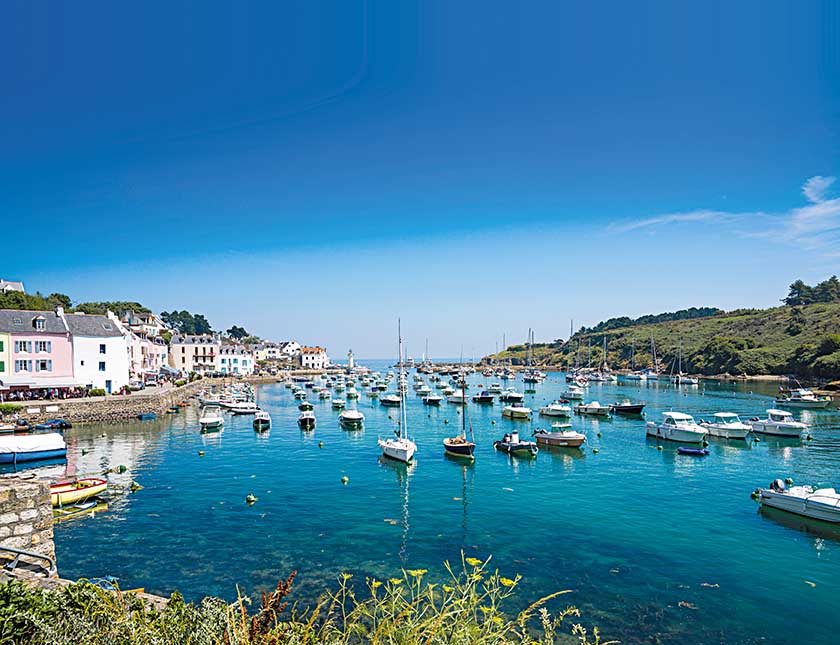
Where to stay
Porto Santo Hotel & Spa was the first hotel on the island and most members of staff have worked there for years. The decor is a little faded but a spa was added a few years ago. Doubles from £68. 00 351 291 980 140, hotelportosanto.com.
How to get there
TUI (tui.co.uk) flies from London Gatwick to Porto Santo from £265 return.
Subscribe and view full print editions online... Subscribe